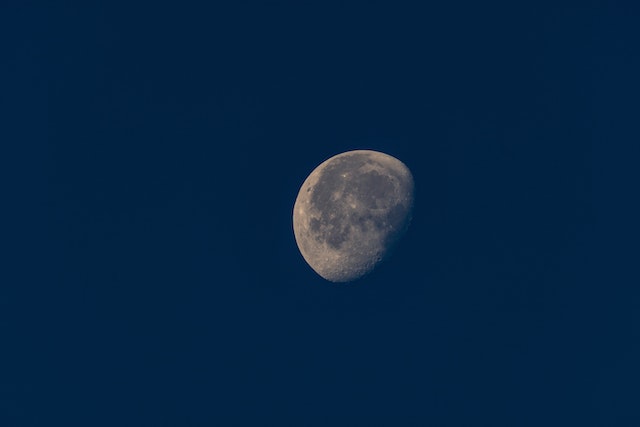
Could Earth survive without the moon? The planet would survive, but the living organisms on it might have a harder time.
The moon was probably formed when another protoplanet hit the young Earth, obliterating both and making the Earth and moon from the resultant mush. The moon began life at a distance of about 22,500 km and is now an average of 400,000 km away. It is moving away from Earth at the rate of 3.78 cm a year. The moon will keep moving away until it stabilizes, in about 15 billion years. The Earth and the moon will both have been burned up as the sun becomes a red giant long before that. Do we need the moon? What would happen if it suddenly vanished? What does the moon do for us?
The moon is directly responsible for our tides. The gravitational pull of the moon pulls the water on the side closest to the moon away from Earth, causing a high tide. There is also a simultaneous tide on the opposite side of the Earth. This is caused by inertia. The Earth is spinning, and the water wants to go in a straight line. The water on the moon side is pulled by the moon because the gravitational pull of the moon overcomes the inertia. On the other side of the Earth, the moon’s gravitational pull is weaker, and inertia pulls the water up into a bulge, making high tides on both sides of the Earth at the same time.
If the moon vanished, we would still have tides because the sun would pull the water up a little, but they would be much smaller than they are today. Tides are responsible for a lot of things on Earth. In the oceans, tides churn up material at the coasts, providing food for crabs, shellfish, snails, and a whole host of other animals. If the tides are gone, these animals will disappear. If these animals are gone, other species will follow and there will be mass extinctions. On top of this, tides also partly drive the ocean currents, which are largely responsible for Earth’s climate. Ocean currents are driven by the tides, the wind, and heat convection. If the tides are gone, Earth’s climate will change. Life as we know it wouldn’t be able to survive.
If the moon vanished, the seasons would drastically change. The Earth is not straight. It is tilted at 23.4° off its axis. That isn’t a lot and it is the reason why we have summer and winter. Other planets are tilted to a much greater degree. Uranus is tilted by 97.8°. There is a slight wobble in our tilt and it ranges from 22.1° to 24.5° over a 41,000 year period. The extremes of the wobble can cause intense climate change, such as ice ages. The wobble is stabilized by the moon’s orbit in the same way that you are stabilized if you spin a heavy weight around you on a piece of string. Mars has no moon and its axial tilt changes by 10°. On Earth, that change could be as much as 45°, which would mix up our seasons and make ice ages common. Life as we know it wouldn’t be able to survive.
If the moon disappeared, the length of a day on Earth would become much shorter. It would be between six and twelve hours. When the moon orbits, it exerts a pull on Earth, slowing down its rate of spin by about 2 milliseconds every hundred years, slowly lengthening a day. If the moon disappeared, this slowing influence would disappear and the Earth would speed up, rotating once in about six to 12 hours. All animals have evolved to live with a 24 hour day night cycle. If the days suddenly shortened, they wouldn’t be able to survive and life as we know it wouldn’t be able to survive.
Finally, a lot of animals use the moon to navigate by because it is the brightest object in the night sky. A lot of organisms can detect the angle of the moonlight and use it to find their way. Our cities are slowly drowning out the moonlight and causing problems for these animals, but not as many problems as they would have if the moon disappeared. They wouldn’t be able to navigate anymore and they would all die out. On the bright side (pun fully intended), we would be able to see a lot more stars because the light from the moon would have gone. Although, we wouldn’t be here, so that is pretty much irrelevant. And this is what I learned today.
Photo by Brett Sayles: https://www.pexels.com/photo/half-moon-with-black-background-1292627/
Sources
https://oceanservice.noaa.gov/education/tutorial_tides/tides03_gravity.html
https://www.rmg.co.uk/stories/topics/what-would-happen-if-moon-disappeared
https://www.iop.org/explore-physics/moon/how-does-moon-affect-earth#gref
https://en.wikipedia.org/wiki/Axial_tilt
https://www.discoverwildlife.com/animal-facts/ways-moon-affects-wildlife/
